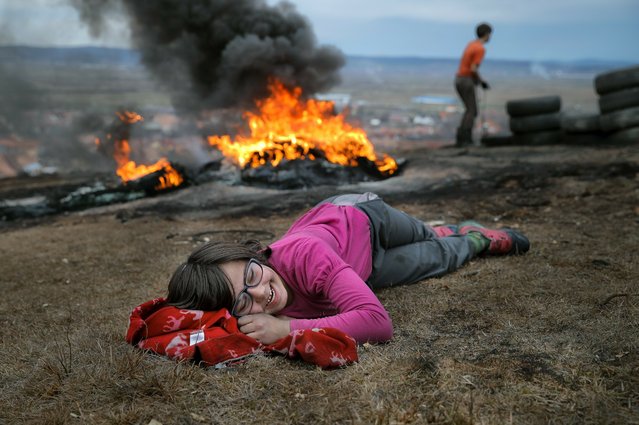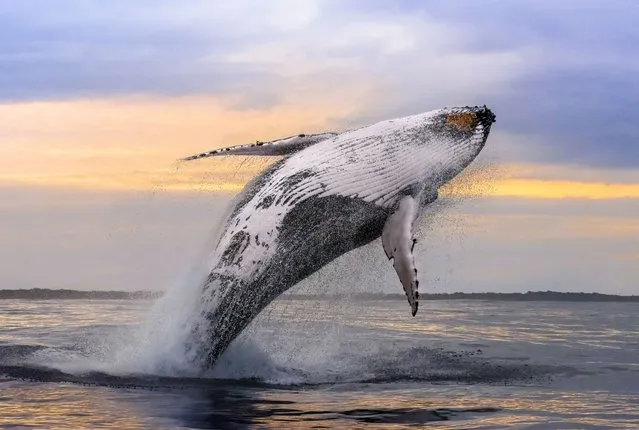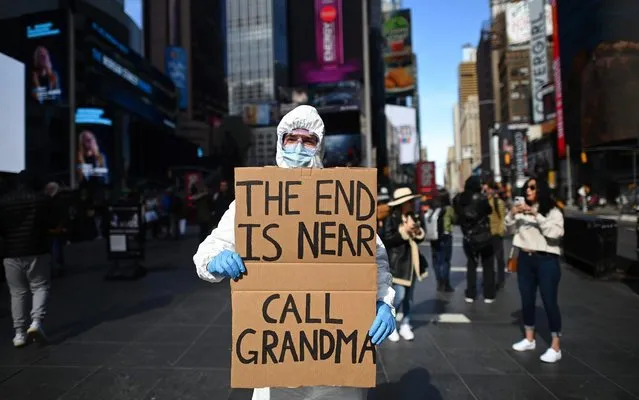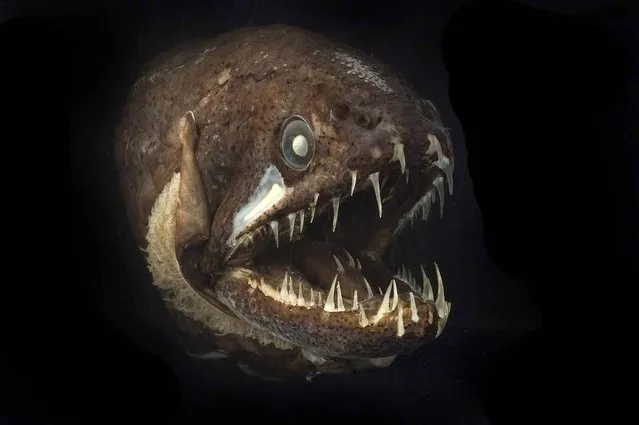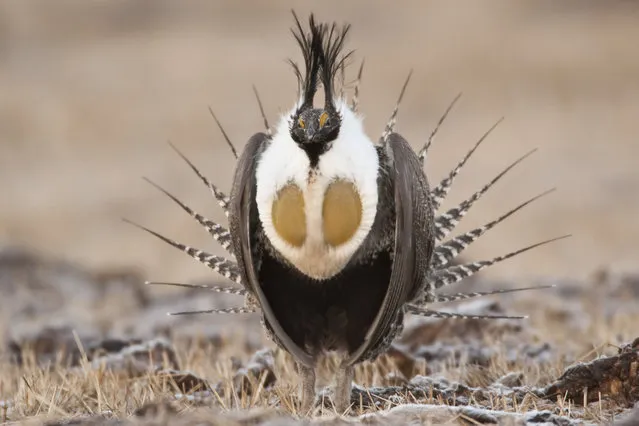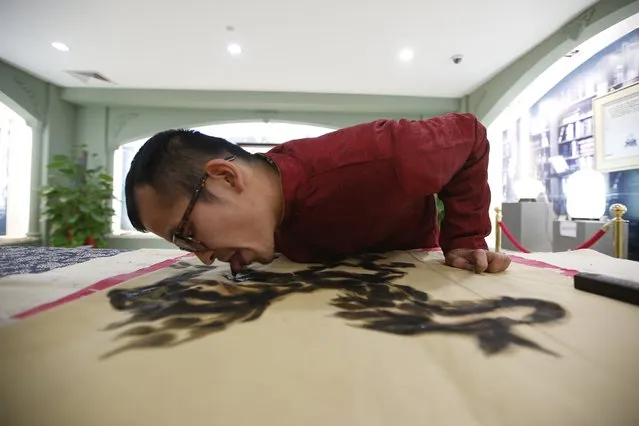
Folk artist Han Xiaoming demonstrates painting with his tongue in Hangzhou, Zhejiang province December 4, 2014. Han dips his tongue in ink to paint on paper, and uses his fingers to fill in final adjustments. The artist also uses a paintbrush held with his mouth and utilizes fish and vegetables as paint tools, local media reported. (Photo by Aly Song/Reuters)
05 Dec 2014 13:15:00,post received
0 comments

